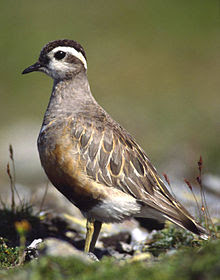 |
| Lively and controversial - Hannah's new book is published this week |
FORMER lingerie model Hannah Bourne-Taylor made headlines on November 5, 2022, when, in a state of almost total undress, she launched a campaign on behalf of her favourite bird - the Swift.
The run-up to that wet autumn day and what has happened since are the theme of her absorbing new book, Nature Needs You - The Fight to Save Our Swifts.
It is a cracking story, full of twists and turns, high and lows, with a few tears along the way and plentiful slices of political duplicity.
In her fast-paced narrative, Hannah also meanders a network of sideroads which leads her both to celebrate the charms of
* Weevils
* Mayflies
* Seabirds
* Dunnocks
* Natterjack toads
* Skylarks
* Blackbirds
She also takes a swipe at the plumage trade of yesteryear and the current widespread use of poisonous chemicals, such as glyphosate, on farmland and elsewhere.
But always the author returns to the thrust of her argument - the need for cavity Swift bricks to be made mandatory in all new housing developments.
How else are fortunes to be reversed for these wonderful but fast-declining birds - "tiny black anchors in the sky" as she describes them?
Hannah acknowledges her initial naivety, especially as she pondered the first steps in her crusade.
She recalls: "I was used to assuming someone else with more expertise and authority would do something or, perhaps, that nothing could be done so there was no point in worrying.
"I had no contacts in the building industry and I knew absolutely nothing about politics."
However, she soon leaned plenty of uncomfortable truths - not least that "corporate giants and lobby groups have invisible back-channels with a government".
With the benefit of hindsight, her entreaties to Michael Gove, the last Government's 'Mr Fixit' were probably a waste of time because it seems he may simply have been 'playing' her for personal publicity and photo-opportunities, with never the slightest intention of mandating Swift bricks.
In revenge, she planned to stand as an Independent in Gove's parliamentary constituency, Surrey Heath, at last year's General Election, but, to no avail, because he decided not to stand for re-election.
In understandable despair, Hannah rails against "middle-aged white men", perhaps overlooking that many of her closest allies - not least Lord Goldsmith of Richmond Park - fall into that very category.
Uncharacteristically, the author is also a little harsh on one or two women - among them housing minister, Dehenna Davison.
Of a post-debate hug that she once received from Ms Davison, Hannah suggests it was sparked by "guilt, not sincerity" when, to many readers, it will seem that it was a well-meant (if ill-judged) gesture of woman-to-woman empathy.
Some of Hannah's writing is delightfully poetic as, for example, when she refers to "a halo of dancing nightjars".
There are some omissions in the book.
At one stage she holds a crunch meeting with a minister, a senior civil servant and a group of officers from the housebuilding sector, but she does not catalogue the identity either of the civil servant or of those companies that were represented.
Also, throughout the text, she omits to give any credit to one major developer, Barratts-Redrow plc, which has blazed a trail in the installation of Swift bricks up and down the country.
Curiously, Hannah cannot bring herself to identify by name one Cabinet minister who gave her short shrift at a Westminster reception - though it is obvious she is referring to former Environment Secretary Therese Coffey. Did she loathe her that much?
It would also have been of interest if she had catalogued those councils which stipulate in their Local Plans a planning condition that Swift bricks must be installed in new housing developments.
Even so, this is an intriguing book which is sure to spark plenty of debate, not just in birding circles but also beyond.
Nature Needs You is published on Thursday May 1 at £16.99 in hardback by Elliott & Thompson.





















.jpg)









